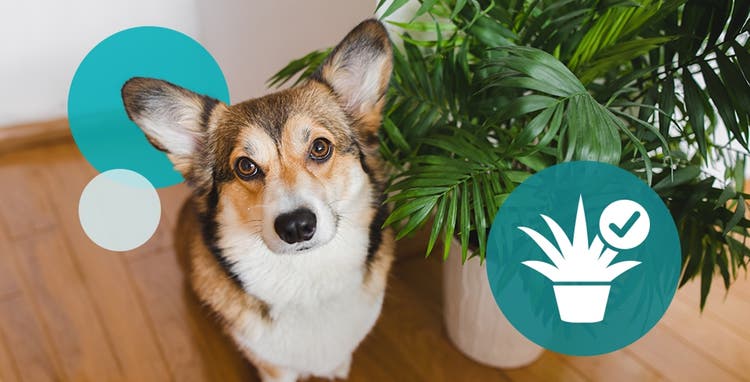Learn about spaying or neutering your cat or dog.
Every pet owner loves to know their cat or dog is thriving, happy and healthy. Whether choosing which supplements to include in their diet or attending an annual vet checkup, pet owners make a lot of proactive decisions for their pet’s wellness. This may include deciding if the dog or cat should be spayed or neutered.
What’s the Difference between Spaying and Neutering?
Both terms refer to surgical sterilization, or removal of reproductive organs. The procedure a pet will get is based on their gender:
An ovariohysterectomy (commonly known as “spaying”) involves a vet removing the ovaries, fallopian tubes and uterus from a female cat or dog. This makes her unable to reproduce, eliminates her heat cycle and curbs breeding behavior.
An orchiectomy (commonly known as “neutering”) involves removing the testes from a male dog or cat. This makes a male animal unable to reproduce and reduces or eliminates breeding behaviors.1 Those behaviors may include marking territory with urine, aggression and higher levels of testosterone in male pets.2
There are a lot of reasons for spaying or neutering your pet (and in some U.S. states or cities, it’s mandatory).7 Some owners choose surgical alternatives, such as hysterectomies, vasectomies and ovariectomies, though these may not eliminate an animal’s breeding instinct behaviors.1 Nevertheless, every pet owner can benefit from understanding the basics of spaying and neutering.
When should you spay or neuter your pet? How old should they be? Are there any conditions that would make you wait to have the procedure? Let’s find out.
Should I Neuter My Dog?
Neutering your male dog can depend on a few factors, such as:
- Age: The traditional age for neutering is between four and six months.3 Adult dogs can also be neutered if they are healthy enough to go under anesthesia, though they face higher risk of post-operative complications.4
- Breed: Research has shown that larger male dog breeds mature later than smaller dogs, so a vet may recommend waiting until a larger dog is a year or more before neutering.3
- Environment: If the puppy is the only intact dog (meaning they are not yet neutered) in the house, there is less urgency to neuter. If they are adopted with a female from the same litter, they should be neutered and spayed before the female goes into heat.3
- Physical condition: Dogs should be seen by a veterinarian beforehand to ensure they are a good candidate for surgery.3
Should I Spay My Dog?
Spaying your female dog can depend on a few factors, such as:
- Age: Most vets recommend spaying a female dog before her first heat cycle, likely between five and ten months. Spaying before the first heat cycle reduces the risk of dog mammary cancer.3 Adult dogs can also be neutered if they are healthy enough to go under anesthesia, though they face higher risk of post-operative complications.4
- Breed: Research has shown that larger dog breeds mature later than smaller dogs, so a vet may recommend waiting until a larger dog is a year or older before spaying.
- Environment: If the puppy is the only intact dog (meaning they are not yet spayed) in the house, there is less urgency to spay. If they are adopted with a male from the same litter, they should be neutered and spayed before the female goes into heat.
- Physical condition: Dogs should be seen by a veterinarian beforehand to ensure they are a good candidate for surgery.3
Should I Neuter My Cat?
Neutering your male cat can depend on a few factors, such as:
- Age: A vet can neuter a male cat during the pediatric or early age between six to eight weeks of age, or a standard neuter at six to eight months.
- Breed: Breed should have no impact on when a cat is neutered.
- Environment: For any outdoor cats, neutering is especially crucial in curbing stray cat populations and reducing the chance of feline AIDS or leukemia infections.
- Physical condition: Cats should be seen by a vet beforehand to gauge any risks associated with anesthesia.5
Should I Spay My Cat?
Spaying your female cat can depend on a few factors, such as:
- Age: A vet can spay a female cat as early as six to eight months of age. Alternatively, they can wait until after their first heat, about eight to twelve months of age.
- Breed: Breed should have no impact on when a cat is spayed.
- Environment: For any outdoor cats, spaying is especially crucial in curbing stray cat populations and reducing the chance of feline AIDS or leukemia infections.
- Physical condition: Cats should be seen by a vet beforehand to gauge any risks associated with anesthesia.5
What Does the Procedure Involve?
Neutering your male dog or cat will be an external procedure where the testicles are removed. Here is generally what to expect if you neuter your male pet:
- Before surgery: Your vet may have recommendations on how much food or water your pet can consume before the surgery. This can impact how animals do under anesthesia, so be sure to follow any instructions.
- During surgery: Generally, neutering is less invasive than spaying. Your pet will first be placed under anesthesia to ensure the surgery is pain-free. In dogs, an incision is made in the front of the scrotum and both testicles are pushed through this incision and removed. In cats, one incision is made over each testicle so they can be removed. The dog’s single incision is sutured closed, whereas a cat’s incisions are typically left open.
- After surgery: Most pets are awake and ready to go home after a few hours. Pets should avoid intense play — solo or with other animals — during the recovery. Monitor the incision site every day to make sure it’s healing properly.
- Additional things to note: The cost of neutering varies widely by geographic area and the size of the pet. Call your vet in advance to see if they can provide an estimate.3
Unlike neutering, spaying your female dog or cat is an internal procedure and is slightly more complicated. Here is generally what to expect if you spay your female pet:
- Before surgery: Your vet may have recommendations on how much food or water your pet can consume before the surgery. This can impact how animals do under anesthesia, so be sure to follow any instructions.
- During surgery: An incision is made in the middle of the abdomen. Depending on the age and size of the pet, the incision may be small or large. The surgeon uses a tool called a spay hook to find the uterus and bring it up and out of the abdomen, then clamps off the ovaries with a surgical tool. Using sutures, the surgeon will tie off each ovary, remove it using a scalpel or laser, and then remove the uterus as well. Lastly, the surgeon places the uterine and ovarian attachments back inside the abdomen and closes the incision with layers of suture or staples.
- After surgery: Most pets are awake and ready to go home after a few hours. Pets should avoid intense play — solo or with other animals — during the recovery. Monitor the incision site every day to make sure it’s healing properly.
- Cost: The cost of spaying varies widely by geographic area and the size of the pet. Call your vet in advance to see if they can provide an estimate.6 In some communities, there are low-cost options for owners who need more affordable spaying and neutering procedures.
Why Should I Spay or Neuter My Pet?
These sometimes mandatory procedures help reduce the number of unexpected litters of puppies or kittens, preventing animals from being euthanized and keeping stray populations under control. Spaying and neutering your pets can also help protect against serious health issues and cancers and may reduce behavioral problems associated with mating instincts. During your pet’s first vet visit, you can talk to them about concerns or potential risks; but know that in general, spaying and neutering have no effect on a pet’s ability to learn, play or be a loving part of your family.
Resources
- “Spaying and neutering” (n.d.). American Veterinary Medical Association (AVMA). https://www.avma.org/resources/pet-owners/petcare/spaying-and-neutering.
- “Fact or Fiction? Spay/Neuter Myths Busted” (February 16, 2017). American Society for the Prevention of Cruelty to Animals. https://www.aspca.org/news/fact-or-fiction-spayneuter-myths-busted.
- “Spaying and Neutering Dogs 101: Everything You Need to Know” (January 8, 2019). PetMD. https://www.petmd.com/dog/care/spay-and-neutering-dogs-101-everything-you-need-know.
- “Spay/Neuter Your Pet” (n.d.). American Society for the Prevention of Cruelty to Animals. https://www.aspca.org/pet-care/general-pet-care/spayneuter-your-pet.
- “What Age Should You Spay or Neuter Your Cat?” (February 16, 2017). PetMD. https://www.petmd.com/cat/care/what-age-should-you-spay-or-neuter-your-cat.
- “Spay and Neuter: How Much Does It Cost to Fix a Cat and More” (April 4, 2016). PetMD. https://www.petmd.com/cat/general-health/cat-spay-101.
- “Mandatory Spay/Neuter Laws” (June 2019). American Veterinary Medical Association (AVMA). https://www.avma.org/advocacy/state-local-issues/mandatory-spayneuter-laws.
Related Articles

Puppy Parenting: Our Downloadable Guide
New puppy? Whether this is your first go-round or your fifth, we know that so much goes in to raising healthy, happy pups. Check out our free guide, also available to download!

New Cat or Kitten: Our Downloadable Guide
Thinking about adding a feline to the family? There are so many emotional, social and physical benefits to owning a cat. Check out our free guide, also available to download!







